Sea Salt watercolor paper tests
I’m testing six watercolor papers to see how they respond to a sea salt lifting technique I use frequently in my wildlife art. Papers will be tested in two parts, with the papers in part one being:
- Stonehenge Aqua Hot Press 275 lb
- Hahnemühle Cold Press 300 lb
- Canson Heritage Cold Press 300 lb
Part two features:
- Saunders Waterford Cold Press 300 lb
- Lanaquarelle Rough 300 lb
- Lanaquarelle Hot Press 300 lb
Part two results:
Saunders Waterford 300 lb cold press
Saunders Waterford cold press would be one of my all-time favorite papers if a) it wasn’t quite so thirsty (it takes a heck of a lot of paint and water to cover) and more importantly b) it didn’t fade so much. Pigments, which can be dense and vibrant when wet dry out to be a bit drab and faded. For soft landscapes or moody wet-on-wet works it could be perfect, but for my style, where I like to show the dynamics between intense, deep colors and pale light washes, it comes up a little short. That having been said it responded to sea salt by far the best and takes an enormous amount of punishment, allowing many layers of dense glazing without any tendency to pill or get muddy, and it bleeds wet-on-wet and charges deep into light superbly.
Step 1: wash and salting
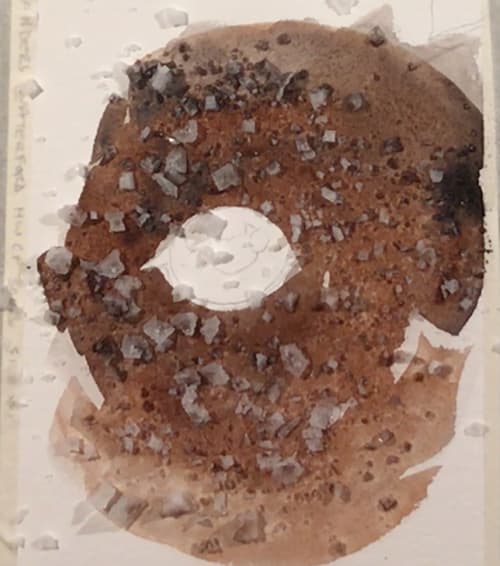
Step 2: Salt removed, basic blocking in
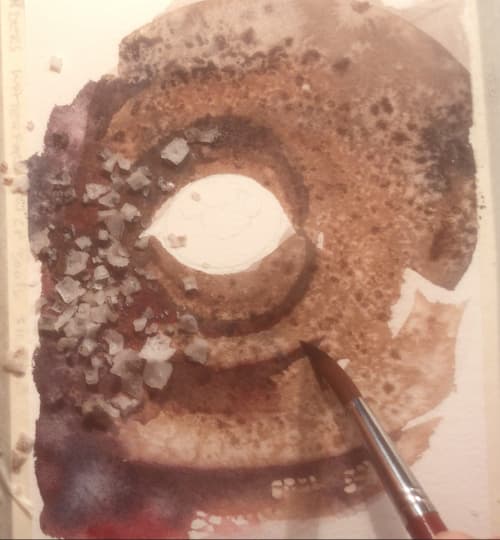
Step 3: detailing
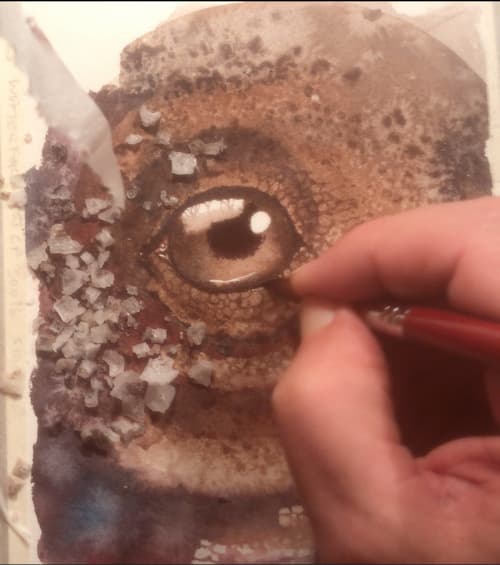
Step 4: completed test
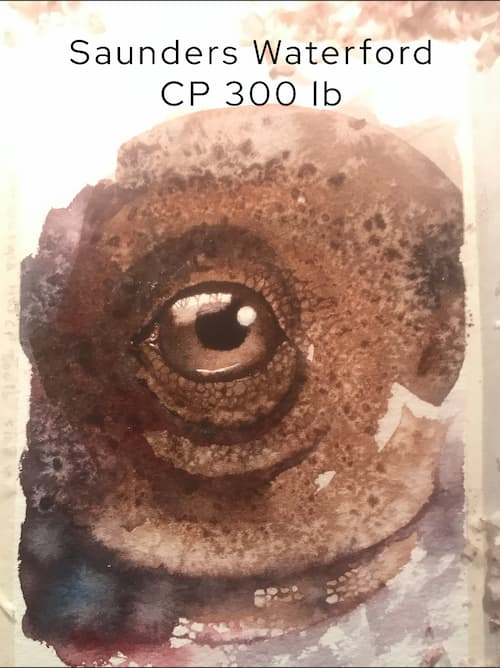
Lanaquarelle 300 lb rough
Lanaquarelle rough is an exquisite paper for color retention, granulation, rich texture, wet-on-wet blends and blooms, but it does pill with heavy work or too many layers of glazing. This is to be expected of almost any rough stock, so I’m anxiously awaiting a sample of their cold press to see if that handles glazing any better. That having been said, it does allow simple glazing without muddying underlying pigment structure, and it did respond exquisitely to sea salt. I did struggle a bit with creating deliberate blooms, but I have had success in earlier bloom tests on this paper, so my timing was probably off. This paper, like the Stonehenge Aqua, is the perfect vehicle for lifting, whether pigment is wet, satin-dry or bone dry. A little work with brush and water gets you back to the paper or underlying pigment wash very easily.
Step 1: wash and salting
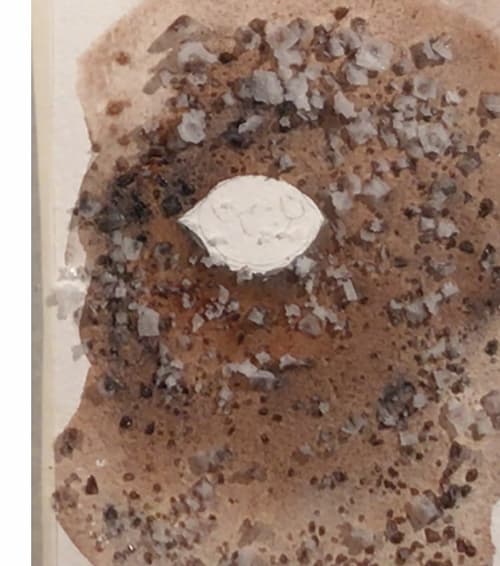
Step 2: Salt removed, basic blocking in
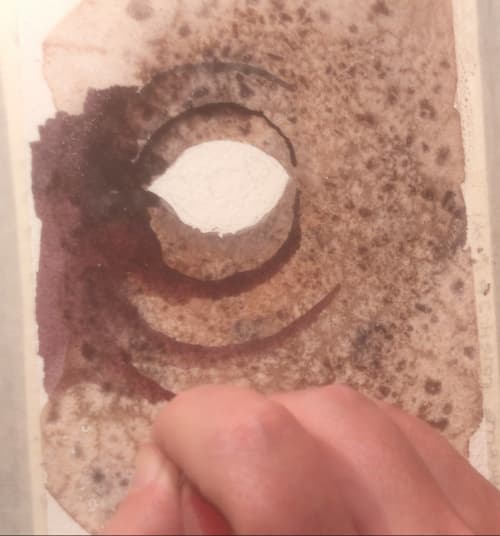
Step 3: detailing
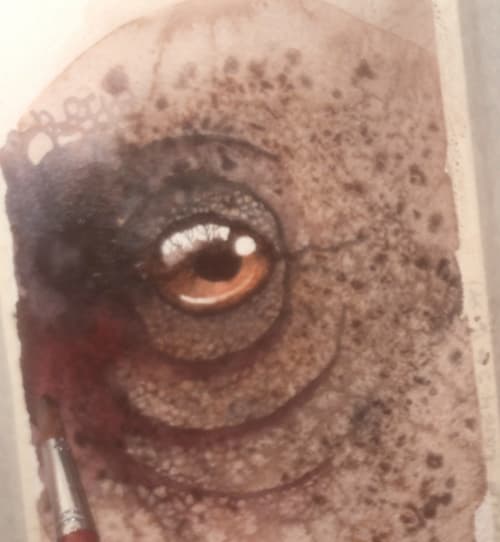
Step 4: completed test (mislabeled CP, it’s actually rough!)
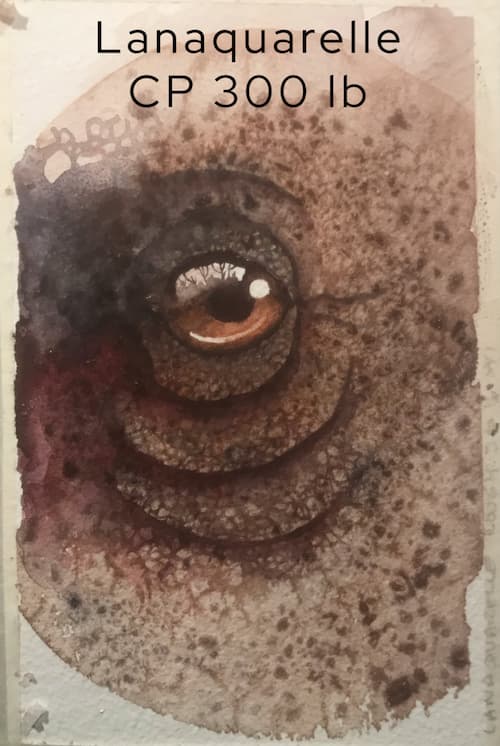
Lanaquarelle 300 lb hot press
Lanaquarelle hot press performed almost as well as Stonehenge Aqua. I got better sea salt textures but only because I was too slow in adding sea salt to the Aqua. Color vibrancy was good, glazing was far better than on the rough and it, like the Aqua was silky smooth for fine detail work.
Step 1: wash and salting
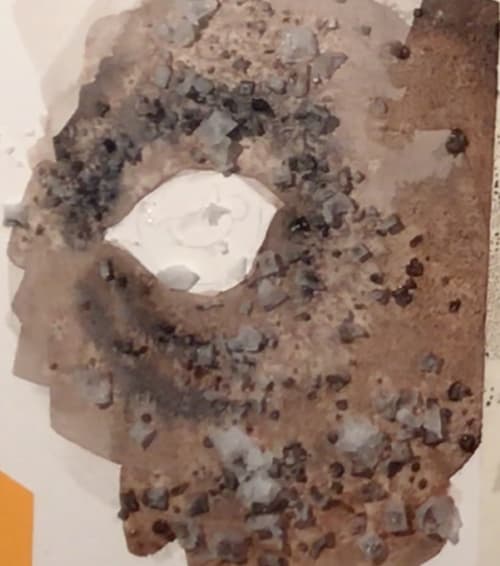
Step 2: Salt removed, basic blocking in
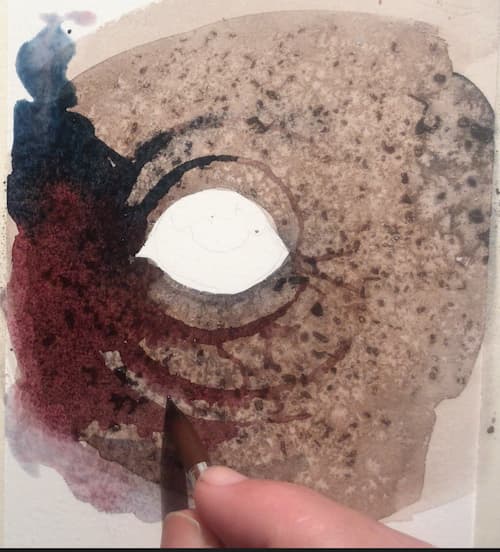
Step 3: detailing (you can see the greasy fingerprint smudge in the eyeball!)
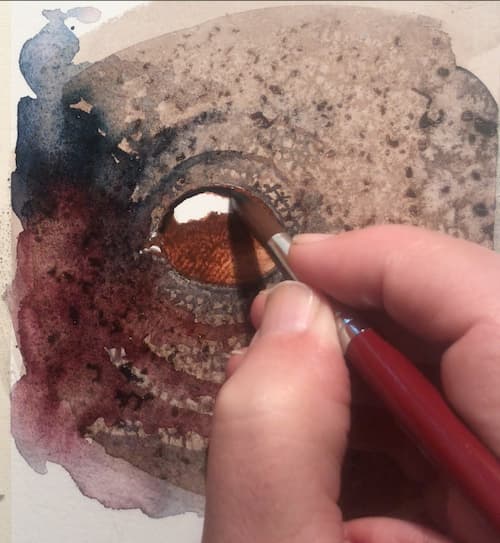
Step 4: completed test
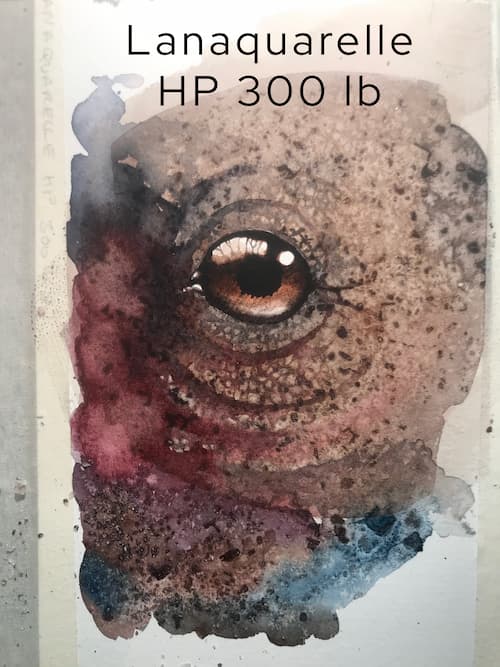
Sea salt test part one: Aqua, Hahnemühle & Heritage